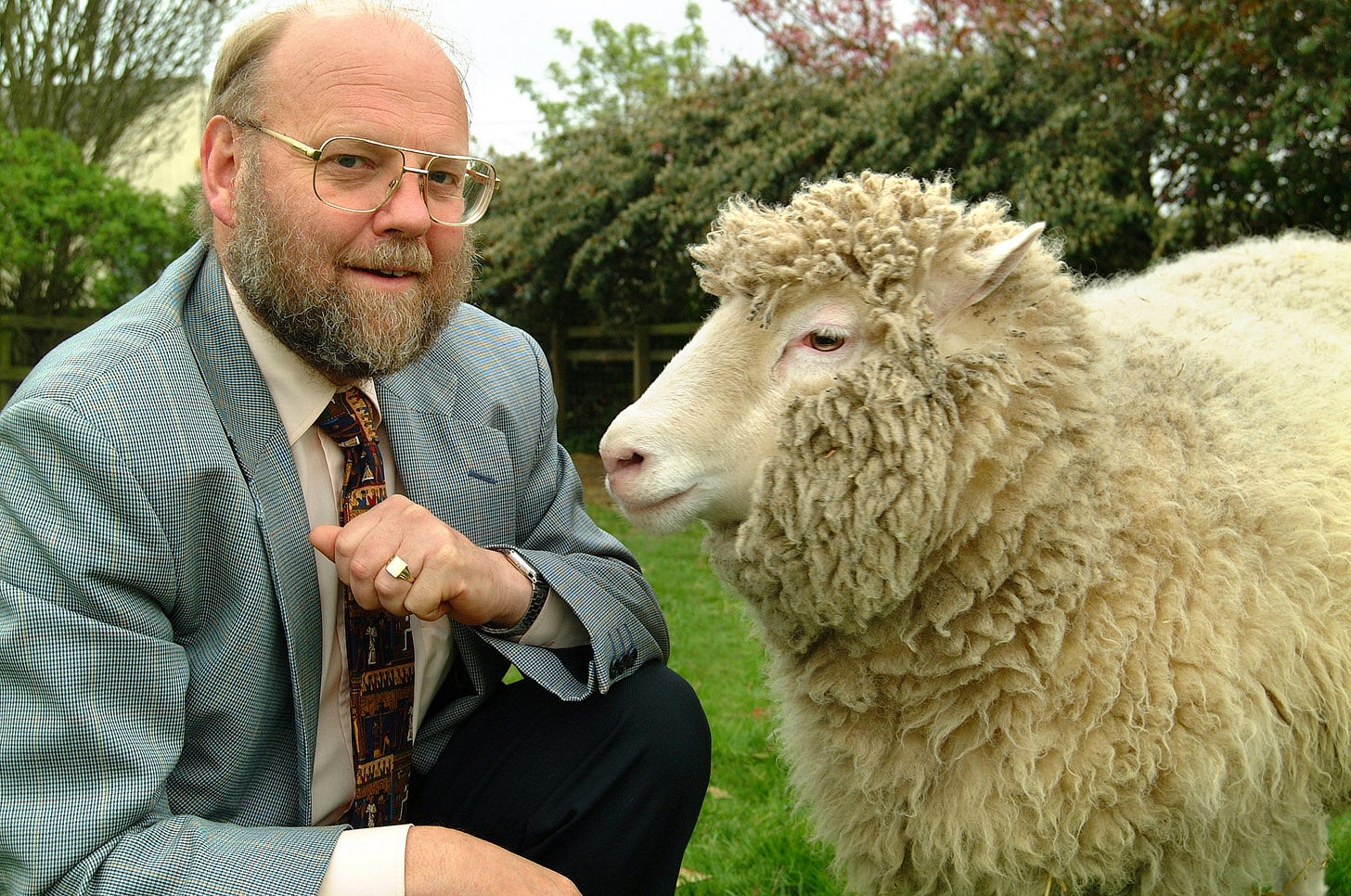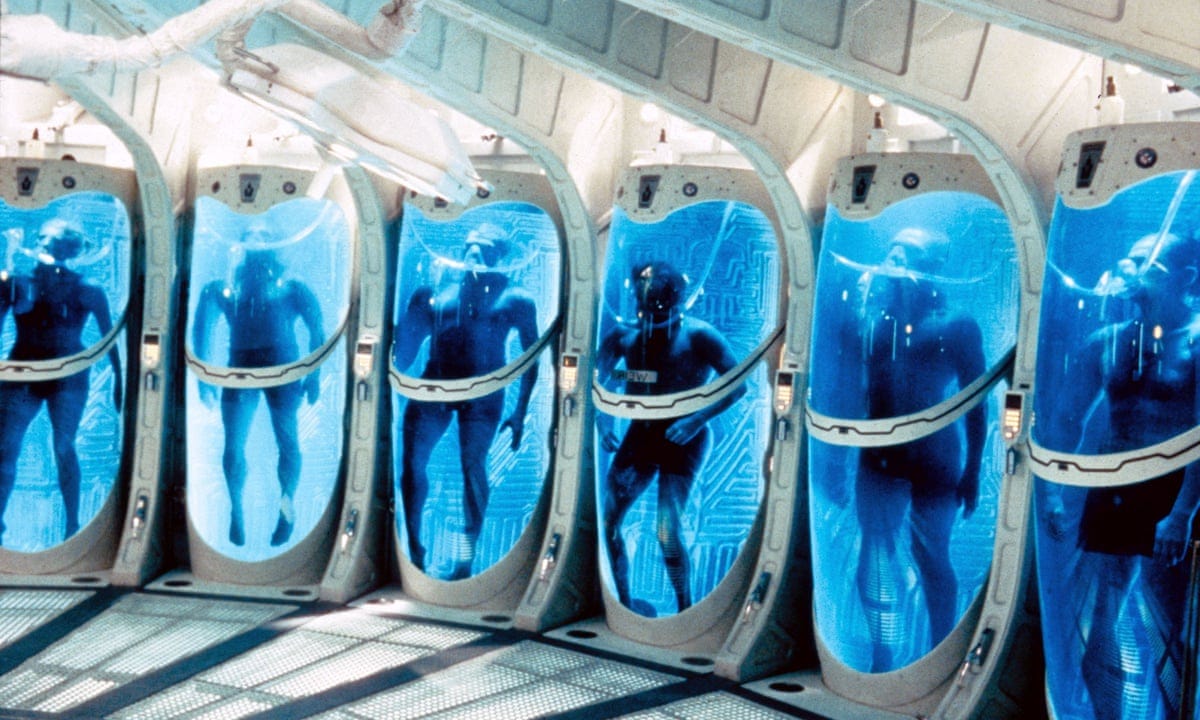Welcome to Startup ROI! I’m Kyle O'Brien, an early stage deep tech investor — alongside Rand Hindi — and community builder based in Paris, France. I write what I see. These days, it’s mostly explorations into various categories of interest including:
The Future of Computing
Blockchain Infrastructure (Privacy & Encryption)
Frontier Health
I enjoy taking complex topics and reducing them into accessible articles and top-notch memes. I also throw bangin’ dinner parties for cool people in tech and venture — sign up here and never miss a meal again.
Invasion from Within (Intro)
This piece covers what I would argue is the fringe of the longevity/biotech sector. A few weeks ago I was in Copenhagen for ARDD, I wrote a piece earlier this year about Bryan Johnson’s Blueprint and (full circle) I’m hosting a dinner on the subject in Paris during which two Frenchies attempting to bring Blueprint to Europe will be serving the “green giant”! Anyways, healthspan has been top of mind for a while now and when I saw a recent pitch that blew my mind I had to report back to you. WARNING: things get weird!
Invasion of the Body Snatchers — the inspiration for this week’s cover art — was a sci-fi horror film released in 1956. Most of us weren’t born yet, so here’s a summary from Wikipedia:
Alien plant spores have fallen from space and grown into large seed pods, each one capable of producing a visually identical copy of a human. As each pod reaches full development, it assimilates the physical traits, memories, and personalities of each sleeping person placed near it until only the replacement is left; these duplicates, however, are devoid of all human emotion.
You know the story: aliens arrive, clones appear, chaos ensues. If I’m being honest, I haven’t even seen the film, but as a pop culture reference point it must be poignant enough to have secured a place in my long-term memory. Sadly, we won’t be discussing aliens today. Cloning, however, will be front and center. This might surprise you: didn’t we clone a sheep in like the year 2000? Old news! Indeed we did. At the time it induced somewhat of a moral panic, a concern around our newfound biological superpowers. In many ways it laid the groundwork for today’s bioinformatic revolution. Yet the core technology — the one that drew criticism and awe alike — was essentially shelved for political, regulatory and religious reasons, in no particular order.
This summer, I came across not one, but two companies making cloning great again — but not in the way you might think. I’ve spent a fair amount of time in the “inner circle” of longevity and ageing research which might be better described as the “outer circle” of traditional healthcare and medicine. I’ve seen some pretty eccentric pitches for extending lifespan from nutriceuticals designed to slow the pace of ageing to drugs that repair cell/DNA damage.
I was by no means prepared for the concept I’m about to share with you…
Dolly the Sheep (History)
In 1996, Dolly the sheep was the first animal ever to be cloned from an adult somatic cell (neither sperm nor egg). This was a big deal scientifically. In essence, they took a mammary cell from one sheep, combined it with an egg of another sheep and then grew a blastocyst (early stage of an embryo) in a surrogate mother. Eventually, the surrogate ewe gave birth to a clone of the mammary cell donor.
The science itself is quite cool, a concept dreamed of by humans since antiquity. But as it turned from science fiction to fact, a conversation on bioethics spilled over into the general public following the media frenzy.
It wasn’t just the religious fundamentalists that succumbed to the panic (although they did lobby to stymie stem cell research). The successful clone opened up a philosophical can of worms:
What does it mean to be an individual?
What is the self?
What human rights, if any, do clones have?
Is it ethical to clone a human for scientific purposes?
Can this be used for evil?
How do the purported societal benefits to cloning get distributed fairly?
Will this technology unlock a path to immortality?
The last question, arguably the most optimistic/hopeful, gained early momentum within the burgeoning biohacking community, but eventually lost steam. That is, until…
Animal Farm (Current State)
Early enthusiasm for human cloning waned when it became clear that cloning primates was exponentially more difficult than farm animals. Decades later, in 2018, researchers at Harvard cracked the code. Something to do with Histone Demthylase and reprogramming epigenetic marks in donor nuclei (bla bla bla science — for my bio nerds: Histone Demethylase Expression Enhances Human Somatic Cell Nuclear Transfer Efficiency and Promotes Derivation of Pluripotent Stem Cells ). The point being, we now have the technology to successfully clone humans. Which brings us back to the original question inspired by our good friend Dolly the Sheep: can we achieve immortality?
Let’s take a step back. How exactly would the pursuit of immortality work?
Option #1: Don’t Die
This has become the motto of people like Bryan Johnson (and Ray Kurzweil before him). Optimize nutrition, medical interventions and exercise to slow the rate of ageing so as to live *forever*?
Option #2: Have a Backup Plan
You’ve probably seen it in the movies or heard of one or two eccentric billionaires in the 90’s paying through the nose to preserve their dead body with the intention of being brought back to life when science allows for it. We actually have a portfolio company, Tomorrow Bio, bringing this technology into the 21st century.
Option #3: Spare Parts
A common analogy in the longevity scene is the original Ford Model T versus a restored version. These are the same car, but the one on the right, despite being roughly 100 years older is in better shape than the original. Replacement parts, new technology, careful maintenance, fresh paint jobs. You get the point.
How does this apply in humans? Well, we could start replacing organs once they start failing. Perhaps one day we can 3D print custom organs and transplant them. Maybe we can grow them from your stem cells in a bioreactor (like those $300K lab grown burgers!). But you guessed it, cloning could play a role here. It’s a perfect use-case: clone yourself and store spare organs for when you need them (no risk of rejection because they are literally yours). This is where the ethics start to get murky. Where do we store these clones? Is it ethical to “breed” them to serve as organ donors? We’ll get into this in the next section.
Option #4: Full Body Replacement
This involves transferring your brain into a clone of your body. There are of course questions of long-term damage/ageing of your brain. But assuming you can stay sharp, it would be pretty cool to just rip/replace your worn out body. There are big outstanding questions about severing your brainstem and restoring nerves. Alternatively, if you could upload your consciousness to disk/the cloud or whatever, maybe you could just transfer your memory backup to a new body. If you’ve seen Altered Carbon, that’s the premise of the series and it comes with it own set of challenges.
The first two seem more realistic, but ultimately neither are sure bets. The second two are completely sci-fi and immediately force us to wade through an ethical morass that most people are uncomfortable confronting. Let’s face our fears…
Monkey Island (Ethics & Edge Cases)
In every case, there’s an assumption that some future scientific unlock will grant us immortality. We just need to survive to that point. In conversations with the founders working on full body replacement, I had so many questions about logistics, timing, parallel technologies and, of course, ethics and basic human rights. There are two major obstacles (that ultimately turned us off to the investments) that remain unaccounted for. That’s what I’ll discuss here.

How can we morally justify creating a human only to be used for replacement parts?
No matter which way you look at the problem, it verges on dystopian almost immediately. I’m still not sure if the proposed solution is more or less dystopian… Having a clone grow up in a false reality, a simulacrum of a life only to be harvested for organs on its 18th birthday sounds horrific. So how do we create a clone devoid of human experience, effectively rendering it inhuman? A sleeve of skin host to healthy organs ready to transplant. The solution: take their brain out of the equation.
How does one remove a brain? Your first instinct might something like a lobotomy — One Flew Over the Cuckoo’s Nest style. This, however, wouldn’t suffice. While it significantly impacts the patients behavior, it does not remove conscious experience. What about opening the skull and removing the brain altogether? Well, without a brain to send signals to the body, the organs will fail and your valuable meat sack of a clone becomes a biological waste heap. There is a clever solution inspired by Mother Nature: congenital hydrancephaly.
In about 88/100,000 babies are born with this defect. In extreme cases, a baby can be born effectively brain dead but remain alive for years (with active care and life support systems). For new parents, this is a nightmare. But for a clone, this is actually kind of perfect… No conscious experience, but just enough brain activity to keep the body alive. The scientists I spoke with think they can program the genetic code, titrated to specific parameters, to activate this type of result intentionally. Problem solved!
Let’s say we figure this out and find a way to convince the general public that we haven’t just opened the door to some medieval, Ripley’s Believe It Or Not live action show. The final step is actually giving birth to these clones. For Dolly the Sheep we had plenty of (presumably) willing volunteers. The search for a willing host becomes exponentially more complex for humans, not to mention politically charged. Surrogate mothers, of course, do already exist. But typically they engage with a set of parents unable to carry a baby themselves (fertility issues, same-sex couples). There’s a mission/purpose, an emotional connection to bringing a child into the world. This case is much different and my expectation is that the demographic for surrogates would shift drastically. So who is left? The poor, the uninsured, the desperate? You can see where this is going. Do these companies recruit surrogates (read: clone birthing vehicles) in developing nations where they can provide low-cost healthcare in exchange for a 9-month part-time gig? The optics aren’t good. The toll on physical/emotional health even hard to gauge.

Another founder explained to me that there is an alternative: artificial wombs. Evidently we are a long way off from a technology readiness standpoint (TRL). Nevertheless, if you want a vivid picture of what this type of facility might like, check out this video. This would solve the ethics problem around surrogates, but I think we have a long way to go before people get comfortable with this concept more generally.
To recap":
The game plan is to clone humans for either (a) organ harvesting or (b) swapping your brain into a new body
To avoid the ethical implications of a fully conscious clone, the strategy is to genetically program the clones to be (effectively) born without consciousness
To incubate these clones, we’ll need either (a) paid volunteers which introduces another ethical dilemma or (b) artificial wombs which appear to be a long way off, not to mention a tough pill to swallow for society at large
The reason I called this section “Monkey Island” is because that is the project earmarked for their next round of funding. The goal is to run trials on primates in a secluded location. Following validation, the next step would be human clinical trials.
All I can say is I don’t want to be within 100 miles of monkey island lest something go wrong!
Dicks out for Harambe (Final Thoughts)
If you don’t remember the Harambe Scandal, read this. It’s completely irrelevant but I have to stick to my theme here, ok!?
I know I’m supposed to close out with a strong opinion, I’m the author, after all. After writing this, I feel roughly the same way I did following those original founders calls: WTF. I mean, I love the idea of extending lifespan but not at the cost of fundamental human rights. I’m a huge sci-fi nerd so the thought experiments around cloning, genetic programming, artificial wombs and the implications on a future society are tantalizing; however, these ideas set off alarms in my reptilian brain. It’s a long way off, but I’ll be watching to see how things play out.
Until then…















